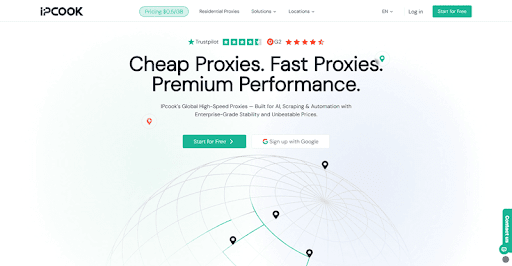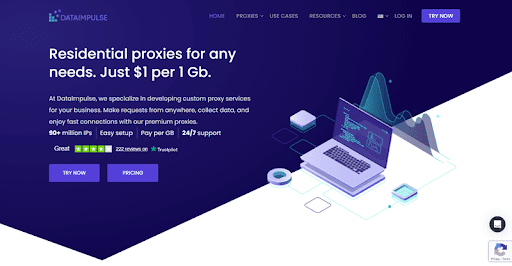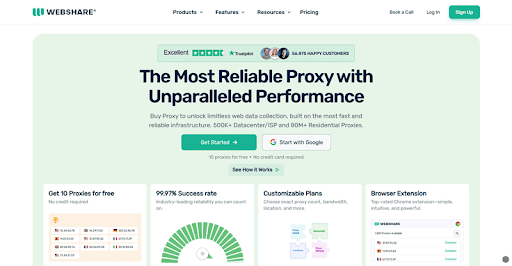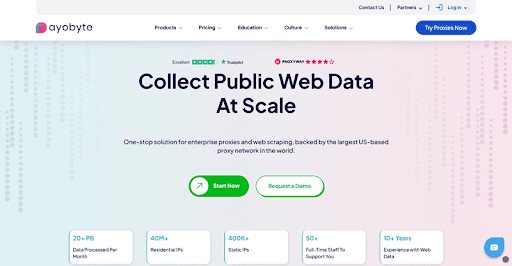Technology
Meet Me at Position Zero: Why Being #1 on Google Isn’t Enough Anymore

If you’re reading this, chances are you’ve Googled something in the last few hours—probably minutes. Maybe it was “best bagel in Columbia,” or “how to convince your boss that TikTok is a viable SEO strategy.” Either way, you might not have noticed that Google has changed dramatically in the last five years. What used to be a race to the number one spot on search results has now evolved into a scramble for something even more elusive: Position Zero.
Let me explain.
Position Zero is that golden real estate right at the top of the search engine results page (SERP), often displayed as a featured snippet, a short answer box, or even a knowledge panel. It appears before the traditional first result, stealing the show like a polite but pushy guest speaker. As someone who’s spent nearly two decades immersed in web architecture, data structures, algorithm changes, and the bizarre beauty of metadata, I can confirm: Position Zero isn’t just another SEO trick—it’s the new battlefield.
And here in Columbia, South Carolina, where I work alongside the team at Web Design Columbia (or WDC for short), this shift is shaking things up in both subtle and seismic ways.
The Evolution of Search: From Links to Snippets
Back in the mid-2000s, getting to the top of Google meant stuffing your site with keywords like it was a turkey at Thanksgiving. If you wanted your Columbia-based bakery to rank for “chocolate chip cookies,” you must say “chocolate chip cookies” 87 times on your homepage and cross your fingers.
Those days are gone—and good riddance.
Today, Google’s algorithm understands context, intent, and increasingly, natural language. With breakthroughs in machine learning models like BERT (Bidirectional Encoder Representations from Transformers), search engines can now parse full sentences like “What’s the best coffee shop open past 8 PM near me?” and determine what you meant, not just what you typed. Featured snippets—those delightful Position Zero boxes—are one way Google serves that up.
So, where does that leave your friendly neighborhood Columbia SEO agency? It is right at the intersection of strategy and structure.
How We Hunt for Snippets (and Sometimes Accidentally Catch a Few)
At WDC, we’ve developed a reputation for our innovative SEO approach—not because we’ve cracked the code, but because we’ve spent 20 years learning which parts of the code not to touch. And when it comes to landing in Position Zero, one thing is certain: it’s not about keywords anymore. It’s about questions, answers, and structure.
Let’s say you’re optimizing a site for a local dental clinic in Columbia. Traditionally, you’d optimize for keywords like “dentist Columbia SC” and “Columbia tooth cleaning.” But what if, instead, you built a page that clearly and concisely answers “What is the average cost of teeth cleaning in Columbia, SC?” in a 40-60 word paragraph with the right HTML markup? Suddenly, you’re not just ranking—you’re the answer.
That’s the kind of technical SEO insight WDC is known for, and it’s surprisingly affordable compared to what massive agencies charge for the same thing.
Globally Speaking, Position Zero Is Dominating
Let’s zoom out for a minute. According to a study by Ahrefs, nearly 12.3% of all search queries now show a featured snippet, and more than 50% of mobile users don’t even click past the first screen. That’s right—Google has effectively turned itself into the answer sheet. Users ask, it responds, and often, they never even visit your website.
The bright side? If you’re featured in Position Zero, you’re still the authority. Your answer is the one quoted. You get the click if there is one. And more importantly, you’re training Google to recognize you as a knowledge source.
But here’s the rub: not every featured snippet leads to traffic. Sometimes it cannibalizes it. You provide the answer, and the user reads it in the SERP, never needing to visit your page. For some industries, that’s a win; for others, a frustrating paradox.
This is where a local Columbia SEO agency like ours brings real value. We don’t just chase rankings. We evaluate the intent behind those snippets, track bounce rates and engagement metrics, and help businesses decide which questions are worth answering and which ones are better left to the competition.
Columbia’s Digital Landscape Is Evolving, Too
This isn’t just academic in a market like Columbia, where small and mid-sized businesses are the backbone of the economy. Our Columbia SEO agency has seen brick-and-mortar businesses transform just by earning a single featured snippet. One local HVAC company we worked with saw a 28% increase in phone calls within a month because their FAQ page was marked up correctly and answered a few commonly searched queries about summer cooling costs in South Carolina.
Of course, that required a blend of content strategy, schema.org markup, clean site structure, and fast load speeds—because let’s not forget, Google won’t feature you in Position Zero if your site looks like it was built on Windows 95.
Also, fun fact: In a recent survey by SEMrush, Columbia, SC, ranked among the top 20 fastest-growing cities in the U.S. for local search optimization adoption. That means competition is heating up, and those who aren’t updating their strategy are essentially giving up their shot at being featured.
Tools, Tactics, and Tech That Actually Help
You’d be surprised how many business owners still think “Yoast SEO green dots” are the end of optimization. Don’t get me wrong—Yoast is a great tool—but it’s the training wheels of SEO. To hunt for Position Zero, we use tools like Surfer SEO to analyze content structure, Ahrefs to track snippet takeovers, and even Google Search Console’s ‘Performance > Search Appearance’ tab to see what types of rich results we’re triggering.
We even use a plagiarism-checking API to ensure snippet-ready content is truly original. Google has a funny habit of devaluing even slightly derivative answers.
Our approach at WDC is to stay lean, local, and laser-focused. We’ve worked with businesses big and small—some of them burned by overpriced NYC firms who delivered nothing but PDFs and heartbreak—and helped them achieve more visibility with less overhead.
Before I wrap this first part, let me tell you something that doesn’t get said enough in SEO circles: no tactic is bulletproof. Google changes its rules. What works today might demote you tomorrow. And chasing Position Zero without understanding your audience’s journey is a good way to end up with empty traffic.
This is why we test everything before implementing at scale, and why we always say: if it looks too good to be true, it probably used ChatGPT without editing.
When Being Too Good at SEO Backfires
Let’s talk about one of the weirdest, most frustrating things that happens when you actually win Position Zero: sometimes, it costs you the click.
Here’s the scenario. You spend weeks optimizing a killer piece of content answering “What’s the best roofing material for humid climates?” Your Columbia roofing client proudly lands the featured snippet. Visibility explodes. But traffic? Flatlined.
Why? Because the snippet answered the question so thoroughly that users didn’t feel the need to click through.
It’s a known issue among SEO specialists worldwide, especially in markets like Columbia, South Carolina, where local businesses thrive on actual customer interactions, not just impressions. Research by SparkToro and Jumpshot famously revealed that 65% of Google searches end without a click—a trend that’s been steadily growing since 2017. And let’s be honest: nobody wants to spend hundreds on optimization just to become a trivia answer.
That’s why a smart Columbia SEO agency like ours doesn’t just chase the flashiest positions—we strategize around which questions and content should aim for snippets and which should keep users curious enough to need that click.
The Global Debate: Is Google “Stealing” Your Content?
You’re not alone if you think this click-thievery sounds suspiciously like theft.
In Europe, there has been significant legal action against Google’s practice of displaying entire answers without crediting or fairly compensating content creators. In 2019, France forced Google to negotiate copyright payments with news publishers. Spain even temporarily shut down Google News over this issue.
While that drama hasn’t officially hit Columbia, SC (yet), the implications matter for businesses here too. If Google’s AI increasingly summarizes your content into “quick answers” while bypassing your carefully crafted landing pages, it means one thing: your SEO strategy must adapt.
That’s why at Web Design Columbia, we create snippet-worthy content that still entices users to click by teasing answers rather than giving everything away. Think of it as giving away the first bite of the pie—just enough to ensure that users still want the rest.
And for the record, yes, this approach is included in our affordable SEO packages because good pie should be accessible to everyone.
What Columbia Businesses Should Know Before Chasing Position Zero
Before you rush off to reformat your FAQ page like it’s the next Wikipedia, there are a few critical things to understand.
First, not every query deserves a snippet strategy. Some queries are “transactional”—meaning users want to buy something, not learn something. Suppose you run a landscaping company in Columbia. In that case, your money is better spent optimizing for “landscaping services near me” than “what is the best type of grass for South Carolina summers,” unless you have a content funnel ready to convert that information seeker into a buyer.
Second, your website’s technical foundation matters. Google’s rich results heavily favor sites with fast load times, clear heading structures (H1, H2, H3), and proper use of schema markup. That’s where a deeply technical Columbia SEO agency (hello again, it’s us) brings serious advantages.
And third, consistency beats perfection. Position Zero today doesn’t guarantee Position Zero tomorrow. Google’s algorithm updates can shuffle rankings overnight—sometimes for reasons that not even Google’s own engineers fully understand. (Seriously, ask anyone who survived the Medic update of 2018 or the Helpful Content update of 2022.)
At WDC, our philosophy is simple: Optimize smart, monitor closely, and never assume you’re finished. SEO is a living, breathing organism, not a set-it-and-forget-it project.
Real Results: Why the ROI Is Still Worth It
Now you might think, “If snippets sometimes steal clicks, and Google keeps moving the goalposts, why bother at all?”
Because visibility still builds authority.
Featured snippets associate your brand with answers. They boost trust. They indirectly improve organic click-through rates for your other listings. They influence voice search results, which is especially important as smart speakers like Amazon Echo and Google Nest have become household norms, even right here in South Carolina.
In fact, voice searches now account for roughly 20% of all mobile queries globally, according to Google itself. And you better believe that when Alexa or Google Assistant answers a question, it’s usually pulling from Position Zero.
So while the direct click might sometimes be elusive, the brand impact and long-term SEO authority you build by winning snippets is priceless.
Here in Columbia, small businesses that previously struggled to get noticed are now building massive credibility, sometimes just by winning one or two featured answers. And it didn’t take a Silicon Valley budget. It took a smart SEO approach tailored to their audience, powered by a team that’s been doing this since dial-up modems were a thing.
Your Next Step
At Web Design Columbia, we’ve spent nearly twenty years decoding the real-world effects of Google’s updates, building strategies that work even when the rules change mid-game. We know Columbia’s business landscape, what resonates with local searchers, and how to help brands claim their rightful place at the very top—or better yet, above the top—of the search results.
If you’re serious about turning your business into a recognizable, trusted voice in your niche, now’s the time to invest in an SEO strategy that aims not just for Page 1, but for Position Zero. And don’t worry—it doesn’t require selling your car to afford it.
For more about how we craft these strategies and help Columbia businesses shine online, check out our technical SEO insights and see how we can help you jump into that sweet, sweet featured snippet real estate.
Because in today’s digital world, being number one is good, but being the answer everyone reads first? That’s better than good. That’s Position Zero.
Technology
Top 6 Cheap Residential Proxies: Saving Your Budget Easily

We all want the power of residential proxies for things like sneaker copping or market research, but that price tag can be scary. I’ve been there, staring at my screen, torn between burning a hole in my pocket or settling for a cheap option that might conk out mid-task. It’s frustrating. If you’re nodding along, you’ve landed in the right spot. I’ve tested a bunch of services to find that sweet spot where cost meets performance. Stick with me, and I’ll break down the top cheap residential proxies that actually work.
Why Choose Residential Proxies over Other Types?
So, why all the buzz about residential proxies? Think of it this way: datacenter proxies are like wearing a neon sign that says “I’M A BOT,” while residential proxies blend in with the regular crowd. They use IP addresses from real devices in real homes, making your online requests look completely normal. This type of IP source is a game-changer. It helps you bypass tough geo-blocks and avoid getting your accounts flagged or banned. For tasks like ad verification or accessing localized content, they’re simply unbeatable.
Top 6 Cheap Residential Proxies for Your Tight Budget
Now, it is time to get into the good stuff. Here’s my handpicked list of the best affordable residential proxy providers that deliver solid value without the crazy costs.
Top 1. IPcook
IPcook is my personal favorite and the one I use most often. It just hits that perfect balance of price and power. For $3.2 per GB, you get premium features that are often missing from other affordable residential proxy services. A huge plus for me is that their traffic doesn’t expire. Any unused data rolls over to the next month, which saves me money and stress. During my tests, the speeds were consistently fast, and the connections were rock-solid.
What really sold me was the control. You can fine-tune the IP rotation per request or per interval to your heart’s content. If you need a consistent IP address, IPcook also suffices by allowing you to set sticky sessions that can last up to 24 hours. No matter which type of control you want, it’s all there. It’s a top-tier choice for anyone looking for the best cheap residential proxies.
- Elite-level anonymity that passes strict checks.
- Highly flexible rotating or sticky IP sessions.
- Massive pool of 55M+ IPs across 185+ regions.
- Simple setup with great support for scripts and tools.

Top 2. DataImpulse
DataImpulse is the budget king, no doubt. If your primary concern is cost, this is one of the cheap rotating residential proxies out there, with prices starting at just $1 per GB. They offer a decent network and basic features that can handle light tasks. I’ve used them for simpler jobs where top-tier speed wasn’t critical.
However, you get what you pay for. I noticed the speed and connection stability weren’t as reliable as with other providers like IPcook and NetNut. There were occasional timeouts, which could be a deal-breaker for time-sensitive automation. It’s a decent option if your budget is extremely tight and your needs are basic, but you need to be cautious when you are dealing with a large-scale project.
- Extremely low-cost entry point.
- Adequate for basic browsing and data collection.
- Straightforward user dashboard.
- Offers both static and rotating options.

Top 3. Webshare
Webshare is another popular option on my list of affordable residential proxies. They offer a good range of features and a solid network. Priced at $3.5 per GB, they are a direct competitor in the cheap residential proxy market. I found their proxy setup to be quite easy, and they offer a generous number of free proxies to start with. This way, you can try out its performance before you decide to commit.
The main drawback for me is their traffic policy. Unlike IPcook, your unused data gets wiped clean at the end of the month. This “use it or lose it” model can be inefficient if your workload varies. It’s a solid service, but the lack of data rollover is a significant downside in my book.
- Generous 10 free proxies for testing.
- User-friendly platform and API.
- Good overall performance and reliability.
- Supports multiple authentication methods.

Top 4. Rayobyte
Rayobyte has built a strong reputation in the proxy space, and its residential network is robust. I appreciate their transparent, flat-rate pricing of $3.5 per GB, whether you buy 1GB or 49GB. This simplicity is great for individuals or small companies that watch their budgets closely. In addition, Rayobyte’s proxies are high-quality and work well for demanding tasks like large-scale data scraping.
On the flip side, their geographical coverage isn’t as extensive as some others on this list. If you need IPs from very specific or less common countries, you might find their pool a bit limited. Though the coverage might not suit everyone’s needs, they are a trusted provider of affordable rotating residential proxies.
- Consistent and reliable proxy performance.
- Simple, flat-rate pricing structure.
- Strong focus on ethical proxy sourcing.
- Helpful customer support team.

Top 5. NetNut
NetNut is another great competitor in the cheap proxy battlefield. At $3.53 per GB, their pricing is competitive with other best cheap residential proxies. With website unblockers and scraper APIs available, it is definitely a powerhouse, especially for heavy-duty, large-scale data scraping. They use unique network technology that can offer great stability for specific use cases. Therefore, their service is professional and geared towards businesses.
The biggest hurdle with NetNut is their minimum purchase requirement. You can’t just buy a single GB; you have to commit to a larger package, starting at 28GB. This makes it less accessible for individual users or small projects. It’s a premium service with a premium entry point.
- Excellent for high-volume, professional scraping.
- Stable and fast network infrastructure.
- Advanced features for enterprise clients.
- Strong performance in targeted regions.

Top 6. MarsProxies
Now comes the last item on the list of best cheap residential proxies. MarsProxies positions itself as a premium provider, and you can feel it in their service quality. Their network is reliable and their connections are secure. I was impressed with the uptime during my tests. They are a solid choice if reliability is your top priority.
However, this quality comes at a cost. At $4.99 per GB, they are the most expensive option on this list. For me, the price is a bit steep compared to the value offered by others like IPcook. I’d only recommend them if your budget is flexible and you absolutely need their specific feature set.
- High reliability and excellent uptime.
- Quality customer service.
- Good for sensitive business tasks.
- Flexible authentication options.

How to Select the Best Cheap Residential Proxy?
With so many options, how do you pick the right one? Don’t just look at the price per GB. You need to dig a little deeper to find a service that won’t let you down. Based on my testing, here are the key things I always check before committing.
- Test the Speed: Always run a speed test. A slow proxy is useless. Look for providers that publish their average response times.
- Check the IP Pool: A large, diverse pool of IPs is crucial. It prevents overuse and increases your success rate when accessing geo-restricted content.
- Review Pricing Structure: Look beyond the headline price. Check if traffic expires and if there are any hidden fees or minimum commitments.
- Prioritize Anonymity: Ensure the provider offers elite-level anonymity. Your requests shouldn’t leak any proxy-related headers if you want to remain completely unseen online.
- Utilize Free Trials: A free trial or test credits are your best friend. It lets you verify the service’s performance with your own tools and workflows.
FAQs About Cheap Residential Proxies
Q1: Which is the best cheap residential proxy?
Honestly, the “best” one depends entirely on your specific needs and budget. Some are cheaper but less reliable, while others are more powerful but cost a bit more. If you ask for my personal pick, I’d go with IPcook. Its mix of affordable pricing, stable performance, and flexible features makes it the most well-rounded and reliable option for most people.
Q2: Are cheap residential proxies safe to use?
Generally, yes, if you stick with reputable and reliable cheap residential proxy providers. The real risk comes from using suspiciously cheap or free services. These can be slow, unstable, and might even log and sell your data. It’s always worth paying a little more for a provider you can trust with your online security.
Final Words
Finding good and cheap residential proxies doesn’t have to be a nightmare. The key is to balance cost with the features you truly need. From my hands-on testing, services like IPcook really stand out by offering premium quality without the intimidating price tag. I hope this breakdown helps you cut through the noise and find a service that works perfectly for you and reduces your budget.
Technology
The Rise of Paid Telegram Communities: How Creators Are Monetizing Group Chats

In recent years, Telegram paid channels and VIP paid groups have become one of the most effective ways for creators to build loyal audiences—and earn a revenue stream for their time, insights, and content. Unlike traditional social media, Telegram enables creators to establish intimate, exclusive communities where members can engage directly, learn, and connect.
From trading signals and crypto insights to coaching and niche education, Telegram’s flexibility has made it the go-to hub for subscription-based communities. But the real question is: how do you monetize a community effectively without spending hours managing payments, renewals, and access?
The Shift Toward Exclusive, Paid Communities
Telegram has evolved beyond a simple messaging app. For many creators, it’s now a business platform. People no longer just join groups—they subscribe to private spaces where they can get real value. This trend has exploded because Telegram offers something other platforms lack: simplicity, privacy, and automation.
Instead of relying on crowded Facebook groups or algorithm-heavy apps, creators are turning to paid Telegram groups and channels where they have full control. It’s like owning your own membership site—without the tech headaches.
Monetization Made Easy with InviteMember
If you’re wondering how creators actually run their Telegram paid channels, the answer often starts with the InviteMemberBot.
InviteMember is a powerful membership management system designed specifically for Telegram. It helps creators automate everything—from accepting payments to granting access to private groups or channels. The beauty is that InviteMemberBot isn’t a subscription bot itself, but rather an intelligent management platform to create your own subscription bot and business landing page, and connect your Telegram community with your payment processor.
Here’s how it works:
- You connect your Telegram bot and community.
- Set up your plans—monthly, annual, or even lifetime access.
- InviteMember handles the automation: once someone pays, they’re added to your paid Telegram groups and channels.
- If they don’t renew, the system automatically removes access.
It’s that seamless. No spreadsheets. No manual tracking. Just smooth, automated membership management.
Many creators share their Telegram paid channels link directly through InviteMember’s checkout page, turning social followers into paying community members in seconds.
Why Creators Are Choosing Telegram for Paid Memberships
- Global Audience Reach – Telegram’s international popularity means creators can sell subscriptions worldwide.
- Direct Connection – No algorithms or middlemen—just authentic community interaction.
- Low Overhead – Running a VIP paid group on Telegram is cheaper than building and maintaining a website.
- Automation Ready – Platforms like InviteMember remove all the manual work.
Enhancing Support with SUCH bot
For creators who want to offer quick support or collect feedback inside Telegram, the SUCH bot is a simple yet powerful option. It’s a bot builder that lets you create support or feedback chatbots with ease—no coding needed. You can even enable AI-powered automatic replies to handle common member questions or guide new subscribers.
While InviteMember takes care of subscriptions and access, SUCH bot helps you stay responsive and organized by keeping support conversations running smoothly right inside Telegram.
Building a Sustainable Income Stream
The rise of Telegram paid channels marks a shift in how creators earn online. Instead of chasing ad revenue or affiliate links, they’re turning their expertise into recurring income. Whether you’re a fitness coach, educator, or market analyst, monetizing a community through a paid Telegram setup can be the simplest, most direct business model you’ll ever launch.
The formula is straightforward:
Engaged audience + quality content + smart automation = sustainable income.
Final Thoughts
Paid Telegram communities are no longer a niche trend—they’re a growing economy. Tools like InviteMember make the process of setting up and managing these communities effortless, while the SUCH bot keeps member communication seamless through AI-powered support.
If you’ve ever thought about turning your Telegram following into a revenue stream, now’s the time. With a well-structured paid Telegram group, an automated setup, and authentic engagement, your community can become both a source of impact and income.
Technology
From Home to Hills — My First Long-Distance Camping Trip on an Electric Bike

Something is just magical about the thought of getting out of the city, the noise, the rush, the constant traffic, and going out into the hills, where it is time to slow down. I had always wanted to have a visit which would bring me back to the world of nature, but I wanted to do something different this time. No automobile, no company, no one, only me, my mind, and the open highway.
That is when I encountered the idea of the electric dirt bikes. I had heard about them previously, but never thought that one could cope with a long-distance ride. Curiosity became excitement, and within days, I had already decided to go camping with my first-ever camping trip, and all I needed was an electric dirt bike to be my transport.
The notion was insane — to ride a battery-powered bike to the hills out of my home. Yet I longed inside myself to have the excitement of something new. And when I was filling my camping bag and closing my jacket, I never thought this would be among the most memorable moments in my life.
The Road Begins -New Way of Travelling
So, I was instantly on the road. I knew how this ride was going to be different. The electric dirt bike was hardly hearable, and the acceleration was felt instantly and in a very strong manner. The highway was endless, and all the twists and turns were a challenge to navigate.
I sped over silent farms, little rivers, and mountain curves over which the morning mist rushed on the earth. No fuzziness or engine sound, they were on a fuel bike; the only thing one heard was the wind gently swirling around and the tires gently rolling on the road.
That is when I became aware of the real beauty of electric travel: it is silent, immobile, and connected with nature.
Climbing Higher: The Freedom of Electric Power
I was shocked to find how easy it was to ride the bike on steep roads as I started riding uphill roads. In most cases, these climbs need some force- either on the engine or the rider. However, the electric dirt bike seemed to ride up as though it was made to face this challenge.
Each thrust of the throttle enabled me to feel the power at my feet. No indecision, no struggle–but pure hard silence. I stopped in between to get some of the snapshots and realised how clean the air was. No puffing-out of smoke, no scraping of gears, just me, and the cry of birds in the valley.
The Hero of the Journey: HappyRun 6500W Electric Dirt Bike G300 Pro -2025

The main thing that caught my attention with this unforgettable journey was the HappyRun 6500W Electric Dirt Bike G300 Pro 2025, which is the real highlight of my trip. It is not just a bike, but a high-performance and missionary bike that would surely be ridden by everybody who desires to experience the freedom of roaming out of the door. Her motor is very strong, with 6500W, and thus, has a tremendous torque, and this allows it to climb a hill or rather rocky mountains, which are not stable. It accelerates fastest, and the top speed is 50 mph which is mind-boggling, but it is a well-balanced and stable car.
The most impressive thing to me was the lithium battery that was 72 V 30 Ah, which enabled the bike to cover a course with almost 70 miles of range, given it had a single cycle of charge. That is the type of reliability that we would fall in love with in the eyes of those of us who are going on long-distance adventures, such as myself.
Its suspension is powerful and capable of going through all the bumps, and its brakes are fast, and they can work even in rough areas. It is not that delicate, but it is modern in fashion and a head-turner anywhere.
Mountain Mornings and Camping Nights
The electric dirt bike had brought me to the place where nature was the master; there was no pollution, no crowd, only millions of stars above me. I sat on a small campfire and wondered how this travel was so dissimilar to conventional travel.
On the following morning, I rode the bike to see what was around. What was new in each direction was a muddy slope and a rocky turn, and hidden falls. The bike managed to cope with everyone like a professional, which led to the conclusion that adventure and technology can be the most successful combination.
Why Everybody has to visit an Electric Dirt Bike Adventure
You are denying yourself something special in case you have never had an electric bikes for sale. You can either camp or simply go outdoors; however, you will discover that with an electric dirt bike, every second will be thrilling and liberating.
Now you can travel further than sightseeing more, and yet have energy to appreciate your destination. And as there are such a great number of electric dirt bikes that are being sold today, there has never been a better moment to have an adventure of your own.
The Future of Electric Adventures
Nature is not interrupted, and he can be viewed without disturbing it, with no fumes, no noise, and basic exploration. The new electric bikes for sale in the market are no longer associated with short-range rides, but can also go on long trips and comfortably ride to work. They are also affordable in the use of fuel and maintenance, not to mention that it is a win-win situation for not only adventure enthusiasts but also for regular riders.
The Travelling That Changed It All
The trek out of the home to the mountains was not merely a different camping trip; it was, in addition, a travel reminder that traveling could be new. I did not just come to the scene, but I had gone all the miles of the journey, all the variety of scenes, all the snort of mountain air.
With its HappyRun 6500W Electric Dirt Bike G300 Pro 2025, the company has managed to make a memorable experience out of an ordinary adventure. It gave me the feeling of being sure, strong, and comfortable at the same time, and I’ll be in love with the idea of sustainable travel.
In the same way, you can calculate your next outdoor adventure, and you will forget where to go, but you should also question yourself, how to find the way there. The right ride can turn a ride into a lifetime experience as at times, as it can occur.

 Blog10 months ago
Blog10 months agoHow to Deal with Scabies While Traveling

 Travel10 months ago
Travel10 months agoRichmond, Virginia Street Art Guide

 Travel10 months ago
Travel10 months agoPerhentian Islands: How to Get There, What to Expect, & More

 Travel10 months ago
Travel10 months agoHow to Live in Your Car in New Zealand

 Travel10 months ago
Travel10 months agoSouvenir in Nepal: A Guide to Unique Handicrafts and Cultural Treasures

 Travel10 months ago
Travel10 months agoVegan Guide to Dining Out in Richmond, Virginia

 Food10 months ago
Food10 months agoVegetarian Food Nepal: A Journey into Flavorful Plant-Based Cuisine

 Travel7 months ago
Travel7 months agoA Local’s Guide to Sanibel Island, Florida















